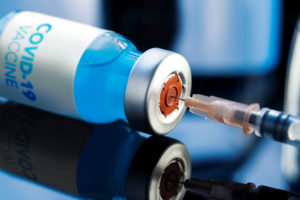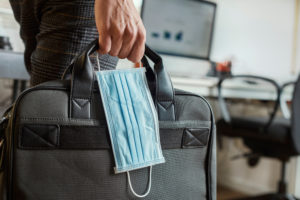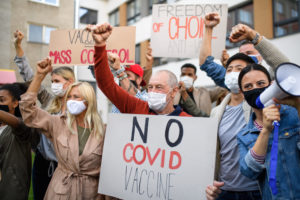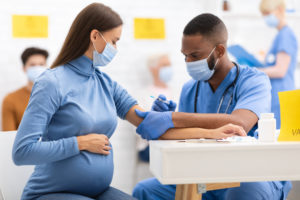The first coronavirus case of “unknown” origin was recently confirmed in California.
So far, authorities have been able to trace the origin of all coronavirus cases in the U.S. The patients had either traveled somewhere the virus was known to exist or had been exposed to someone who had contracted the virus while spending time outside of the U.S. This California patient, however, did not travel anywhere known to have the virus and didn’t seem to have been exposed to anyone known to be infected.
This would qualify this patient as the first U.S. case of “community spread” virus, which means the virus may be circulating among the local community and infecting people without an obvious source of the infection.
The U.S. Centers for Disease Control and Prevention (CDC) is investigating the case and noted it was “possible” the patient was exposed to a returned traveler who was infected. Meanwhile, here’s what you need to know about the virus, and how you can protect your family.
What is the Coronavirus?
Coronaviruses (CoV) are a large family of viruses commonly found in many species of animals, including camels, cats, cattle, turkeys, dogs, horses, pigs, and bats. These viruses rarely infect people. Examples of human outbreaks in the past include the MERS-CoV (Middle East Respiratory Syndrome) outbreak, which was first reported in Saudi Arabia in 2012, and the SARS-CoV (Severe Acute Respiratory Syndrome) outbreak, which was first discovered in China in 2003.
The current outbreak is similar to MERS and SARS but is caused by a new strain of coronavirus not previously identified in humans. This strain has been named the coronavirus disease 2019, or COVID-19. It is sometimes referred to as 2019-nCoV, with the “n” standing for “novel.”
Authorities first identified the virus in Wuhan City, Hubei Province, China, in December 2019, discovering it to be the cause of a small number of pneumonia cases. As to how these first individuals contracted the virus, that is still unknown.
From the information provided by China to date, it seems the patients had visited and potentially consumed food from the seafood and live animal market in Wuhan, where vendors sell live and newly slaughtered animals for meat. The virus may have been present in some of those meat items, having originated in the animal hosts.
Health organizations around the world are still investigating to determine exactly where the virus originated. They know, for example, that the MERS virus came from camels and SARS from civet cats (a type of wild cat). They haven’t yet been able to identify the particular animal that may have been the source of COVID-19.
From that original group of people with pneumonia, the virus traveled to friends and family and healthcare staff. As of February 23, 2020, the CDC states there were 76,936 reported cases in mainland China and 1,875 cases in locations outside mainland China. There have been 2,462 associated deaths worldwide, but no deaths have been reported in the U.S.
What Are the Symptoms of COVID-19?
Symptoms of the virus seem to be similar to those associated with other types of flu and can range from mild to severe. The most common ones include:
- Fever
- Fatigue
- Dry cough
Other symptoms may include:
- Aches and pains
- Runny nose and congestion
- Sore throat
- Diarrhea
Most of the time, the symptoms are mild and develop gradually, as with any type of flu disease. Some people have tested positive for the virus when they had no symptoms at all. The good news is that most people (80 percent according to the World Health Organization) recover from the disease without needing additional treatment. Because so many people will suffer only mild symptoms, however, the disease can spread undetected.
About one in every six people will become seriously ill with breathing difficulties and will need additional medical care. In very serious cases, the disease may progress to pneumonia, kidney failure, and death. Those who are more vulnerable to serious symptoms include:
- Older people
- Those with other medical problems like heart disease or diabetes
- Those with compromised immune systems
So far, about 2 percent of people with the disease have died, which gives COVID-19 a lower fatality rate than other viruses responsible for global outbreaks. Those who suffer from a cough, fever, and breathing difficulties should seek medical attention immediately.
How Does COVID-19 Spread?
Exactly how COVID-19 is transmitted is something researchers are still studying. They suspect it acts like other respiratory viruses, spreading via small droplets expelled when someone coughs or sneezes. Those contaminated droplets can then land on objects and surfaces, contaminating them.
Other people can catch COVID-19 by touching contaminated objects and then touching their eyes, nose, or mouth. They may also breathe in droplets expelled from someone’s cough or sneeze.
People most at risk for COVID-19 include those in close contact with animals that carry it, such as live animal market workers, and those who are close to others who have the virus, such as healthcare workers, family, and friends.
How Is COVID-19 Diagnosed and Treated?
The CDC has developed a laboratory test kit to help diagnose COVID-19. Unfortunately, according to recent updates, the test kits the CDC shipped to state labs had a faulty substance used in the chemical reaction. The CDC is working to remedy that situation now. It is expected by the end of February 2020 that about 90 labs across the country will have testing capabilities.
To conduct the test, the doctor simply takes a nasal or oral swab to collect respiratory secretions, which are then shipped to a qualified lab to determine the results. A positive test suggests likely infection with COVID-19. The CDC is also working on a blood test to diagnose the virus, but it will take time to develop.
Currently, there is no medication for the virus, so treatment focuses on supportive care. Just as you would stay home, drink fluids, and rest to get over the flu, you would do the same with COVID-19. If symptoms get worse and include trouble breathing, it’s important to see a doctor right away.
There is currently no vaccine available for the virus, but they are in development. A clinical trial is already underway at the University of Nebraska Medical Center in Omaha, for example, to evaluate a drug previously tested on subjects with MERS and SARS, to see how well it may work in people diagnosed with COVID-19.
How is COVID-19 Affecting People in the U.S.?
Currently, the risk to the general American public is considered low. So far, the U.S. has confirmed a total of 60 cases:
- 42 cases in former passengers of the Diamond Princess cruise ship, which was quarantined in Tokyo Bay for 14 days
- 3 cases in Americans recently repatriated from Wuhan, China, the center of the outbreak
- 14 cases in others who had either recently been in China or are a spouse of someone who recently returned from china
- 1 case at UC Davis Medical Center who contracted the disease through unknown means (mentioned at the beginning of this article)
The CDC has warned that more cases may be identified in the coming days, and that person-to-person spread may continue to occur in the U.S. The organization has recommended the American public be prepared for possible occurrences such as:
- Large numbers of people getting sick and needing medical care
- Closings of schools, childcare centers, workplaces, and other areas of mass gatherings
- Possible overloading of public healthcare providers and hospitals
The federal government is working closely with state and local governments as well as public health partners to reduce and respond to the threat. President Trump recently tasked Vice President Mike Pence to lead the response, and Congress is considering setting aside billions of dollars to help stop the spread of the virus.
How You Can Protect Yourself and Your Family from COVID-19
Healthcare organizations currently recommend standard hygiene measures to help prevent the spread of COVID-19. These include the following:
- Cover your mouth and nose when coughing or sneezing with a medical mask, tissue, or flexed elbow
- Avoiding close contact with those who are unwell
- Using masks and protective equipment (particularly in a health care setting)
- Frequent handwashing with warm water and soap or an antibacterial hand rubs
- Avoiding unnecessary unprotected contact with animals
- Washing hands after contact with animal products
- Making sure animal products are cooked thoroughly
If you’re not feeling well, follow these instructions:
- Stay home to avoid spreading any sickness
- Get plenty of rest and fluids
- If you have fever, cough, or difficulty breathing, seek medical attention early
Finally, stay informed. Regularly check these websites for the most updated information:

Exclusively focused on representing plaintiffs, especially in mass tort litigation, Eric Chaffin prides himself on providing unsurpassed professional legal services in pursuit of the specific goals of his clients and their families. Both his work and his cases have been featured in the national press, including on ABC’s Good Morning America.














Comments for this article are closed.